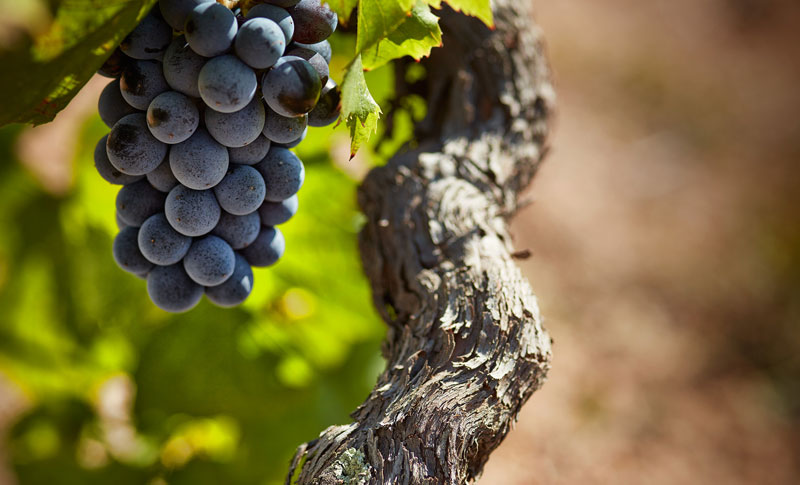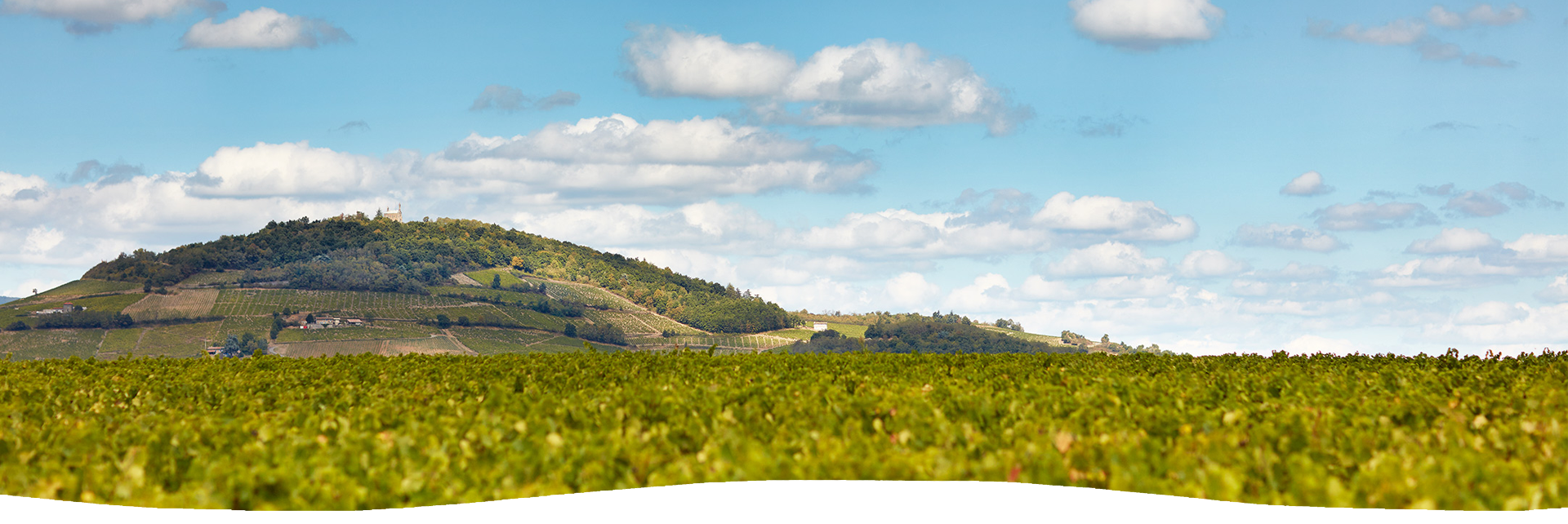The vineyards stretch over some 110 hectares in the Brouilly appellation, divided into 110 plots on granite soil mixed with sand, porphyry, shale and flint. Planted with Gamay, the fabulous potential of the Château de Pierreux terroir is revealed through the authenticity and individuality of its wines.
Ambitious changes
The vineyards are in the midst of major change thanks to new plantation possibilities which combine qualitative and economic factors. The objective for Pierreux is to qualitatively restructure the whole estate and bring out the best in its terroir. This involves a genuine rethink on the chateau’s future direction. One aspect is a new growing method for the Gamay, which was previously pruned into “goblets”, and is now being trained as a single cordon along wires. This means the vine is grown higher, and as a result, mechanized working of the soil is facilitated and causes less damage to the base of the plant. At around 40cm from the ground, there is also better airflow through the foliage and bunches, making them less sensitive to fungal diseases.
Another
major change involves the planting density, with the vines’ upper foliage trained to a relatively high 1.6-1.8 meters. We are switching to rows with two-meter spacing, and 80cm between plants along the row, which results in a significantly lower density of 6,250 vines to per hectare.
This configuration is better adapted to counter the vagaries of the climate and erosion, and provides better yields and better exposure and aeration of the foliage. All the conditions are met to produce more concentrated fruit.
The vines are trained as a single cordon for better exposure of the foliage to attain ideal maturity for the Gamay grape, which is productive and sensitive to moisture. The competition between the vines and the grass between rows naturally limits yields.
From a simply practical point of view, this will facilitate mechanization of work, since grassing down between rows allows tractors to move through the vineyards in all weathers.
Sustainable viniculture
To make a good wine, you need a good approach to growing. That is the credo of the good winemaker. Since 2003, the whole of the Pierreux estate has been managed using sustainable principles. This consists of applying a carefully moderated approach to disease protection in the vine. We use as little treatment as possible to achieve this, and observation is our watchword.
Everything is attentively analyzed, including the prevalence of disease, the population of destructive and benign insects present in the ecosystem in plots, pruning and the number of bunches, development of weeds, the condition of the foliage, etc.
A magnifying glass is an indispensable tool. No action is taken systematically, but instead is decided on a case-by-case basis. Plots are visited with each grower according to a schedule throughout the growing cycle at five key stages. As a result, since 2003, no insecticide has been used, and fertilizer is no longer systematically applied. We simply keep a careful watch for possible deficiencies through soil and plant analysis.

Five plot visits between April and August
The first vine inspection takes place in late April/early May, and determines the first application of fungicide, if necessary, adapting the dose depending on the extent of any disease.
The second visit occurs in late May/early June at the start of flowering, again to decide whether treatment is necessary.
The third comes in June at the stage of bunch closure to decide on the application of a second botrytis treatment.
The fourth is around a fortnight later, and involves assessing the harvest potential and will set the date for stopping treatment.
The fifth occurs 15 days prior to harvest, and is a technical and economic summary of the season.
